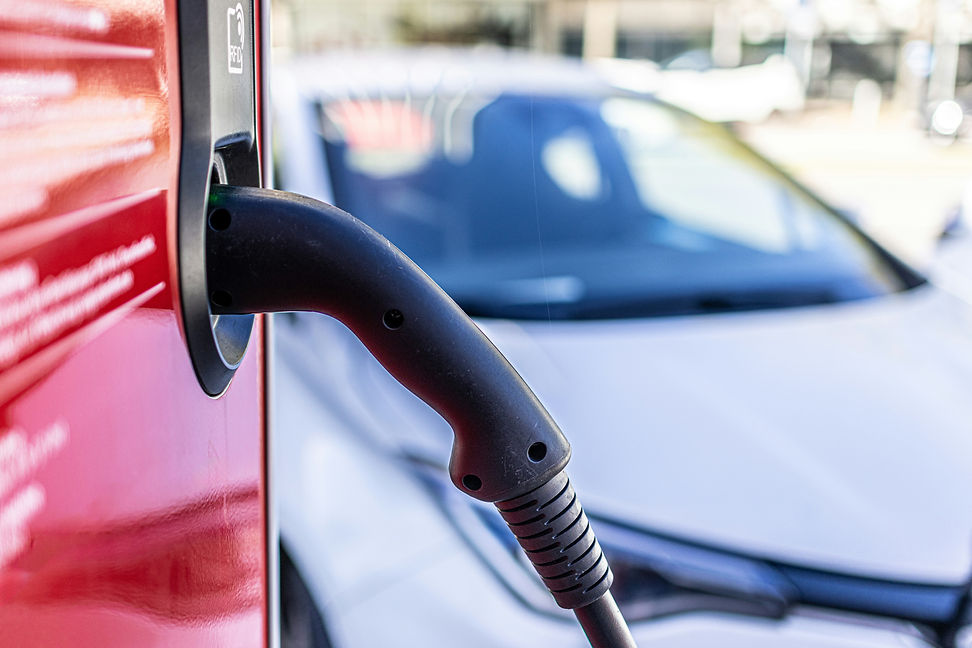
Adapting to Acceleration: Rethinking EV Infrastructure in a Rapidly Changing Industry
Trina Tutor
August 2025
Something that’s been on our minds for a while here at TPN is: the incredible speed at which the parking industry is changing. For decades, things stayed pretty much the same. Cash was the standard, equipment was mechanical, and vehicles were predictable. That’s no longer the case.
In just the past few years, we’ve seen major shifts—from cash to credit to contactless payments, from static systems to real-time parking availability, and from gas-powered cars to electric vehicles. And this change doesn’t seem to be slowing down. In fact, it’s accelerating—so much so that it reminds us of something from the tech world: Moore’s Law.
Gordon Moore’s famous observation in 1965 was that the number of transistors on a microchip doubles roughly every two years. While that’s about computing, we think the principle applies to parking, too. What used to change every few decades is now changing every few years—or less. It’s exponential.
One of the most dramatic areas of change is the vehicles themselves. We’ve already made space—literally and operationally—for hybrids and fully electric vehicles. Charging stations have popped up in garages and lots across the country. Operators are investing heavily to keep up with what’s widely viewed as a permanent shift.
But here’s where we pause and ask: are we actually looking far enough ahead?
There’s another type of vehicle quietly emerging: the solar electric vehicle, or sEV. These cars still use a battery, but instead of relying on plug-in chargers, they generate power from built-in solar panels. That means no cords, no charging stations—just sunlight.
A notable example is Aptera Motors, which unveiled its production-ready sEV at CES 2025 in January. This vehicle offers up to 40 miles of free driving per day powered entirely by sunlight and up to 400 miles of range from a single charge in under an hour. Its solar array, comprising panels on the hood, dash, roof, and hatch, enables over 10,000 miles per year of solar-powered driving in sunny climates, significantly reducing reliance on grid charging.
While no solar EVs are currently in full-scale production, Aptera’s debut signals a shift toward vehicles that generate their own energy. If sEVs follow a similar trajectory to fully electric cars, we could be looking at another major shift in vehicle technology—one that changes the way we think about infrastructure once again.
And that leads to a big question: are we overcommitting to current solutions too soon?
With the push from government entities and public pressure, there’s a strong incentive to install as many EV chargers as possible, as fast as possible. But what happens if—just as quickly as plug-in EVs arrived—they’re replaced by something more advanced? What will we do with all the chargers that are no longer needed?
This isn’t to suggest that we stop investing in EV infrastructure altogether. It’s about taking a step back and recognizing that we’re still in a transition phase. We haven’t reached the final form of vehicle technology yet. Things are still evolving—and we need to evolve with them.
Maybe that means we install fewer chargers for now, but make sure our infrastructure is adaptable. Maybe we focus on flexible solutions that can support a mix of vehicle types—gas, hybrid, plug-in electric, and eventually solar. Or maybe we look more closely at why we’re offering charging in the first place. Is it to meet demand? To align with policy? To drive revenue? That’s a topic worth exploring in a future article.
The bottom line is this: we don’t know exactly where this is all headed, and that’s okay. What’s important is that we acknowledge the uncertainty and build systems that can adjust as the market does. In times of rapid change, adaptability is often more valuable than certainty.
We’re not at our destination—we’re still in motion. And if the last few years have taught us anything, it’s that the next big change could be just around the corner.
Reference:
https://aptera.us/aptera-unveils-production-ready-solar-electric-vehicle-at-ces-2025/